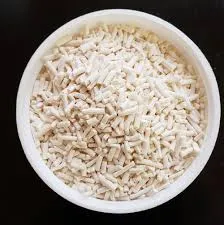
monosodium glutamate ingredients
Understanding Monosodium Glutamate The Flavor Enhancer in Our Foods
Monosodium glutamate (MSG) is a common flavor enhancer known for its ability to elevate the taste profile of various dishes. Discovered in Japan in the early 20th century, MSG is the sodium salt of glutamic acid, an amino acid that occurs naturally in many foods. It is widely used in cooking, particularly in Asian cuisines, but its presence extends across many culinary traditions due to its potent umami flavor, which stimulates our taste buds in remarkable ways.
The effectiveness of MSG as a flavor enhancer lies in its unique ability to enhance umami, which is one of the five basic tastes, alongside sweet, sour, bitter, and salty. Umami, often described as savory or meaty, is naturally found in foods such as tomatoes, cheese, mushrooms, soy sauce, and ripe meats. Adding MSG to food helps amplify this taste without the need for additional salt or artificial flavors, making it a popular choice among chefs and home cooks alike.
The Ingredients of Monosodium Glutamate
Monosodium glutamate is primarily composed of three components sodium, glutamate, and water. Glutamate is a naturally occurring amino acid that plays a crucial role in metabolic functions and is widely found in nature. When glutamate is paired with sodium, it forms MSG, which is typically white, crystalline, and soluble in water. The production of MSG involves fermentation, similar to the processes used to create yogurt or vinegar. This fermentation relies on starches or sugars extracted from sources such as sugar beets, tapioca, or molasses.
The Uses of Monosodium Glutamate
MSG serves a multifaceted purpose in the culinary world. It is commonly added to a wide variety of foods, including soups, sauces, and snacks. In processed foods, it is often used to boost flavor without adding extra calories, making it particularly appealing to health-conscious consumers. Many fast-food chains also incorporate MSG into their seasoning blends to enhance the overall flavor profile of their meals.
monosodium glutamate ingredients

Restaurant kitchens frequently use MSG to create that restaurant-quality taste at home. A sprinkle of MSG can elevate a simple dish like stir-fried vegetables or broths, resulting in a more complex and satisfying flavor. This versatility is one reason MSG has remained a staple in global cuisine.
The Safety of Monosodium Glutamate
Despite its widespread use and the deliciousness it brings to food, MSG has faced scrutiny and debate over the years. Some individuals report sensitivity to MSG, experiencing symptoms such as headaches, flushing, or nausea after consumption—often referred to as Chinese Restaurant Syndrome. However, extensive scientific research has indicated that these symptoms are extraordinarily rare and that MSG is safe for the vast majority of the population when consumed in typical dietary amounts.
Regulatory bodies like the U.S. Food and Drug Administration (FDA) and the World Health Organization (WHO) have classified MSG as safe for consumption. The FDA has even assigned MSG the designation of generally recognized as safe (GRAS). For people without specific sensitivities, MSG can be enjoyed as part of a balanced diet.
Conclusion
In conclusion, monosodium glutamate is more than just a simple additive; it is a powerful flavor enhancer that has stood the test of time in culinary practices worldwide. By understanding its composition, uses, and safety, we can appreciate the role MSG plays in food preparation. Whether you're a professional chef or a home cook, incorporating MSG into your dishes can bring a new dimension of savory flavor that delights the palate. As with any ingredient, moderation is key, and MSG can be part of an enjoyable and flavorful diet when used thoughtfully.
-
The Safety Challenges of Ammonium Nitrate FertilizerNewsJun.26,2025
-
The Critical Role of Mining ChemicalsNewsJun.26,2025
-
Shelf Life of Glacial Acetic Acid Food GradeNewsJun.26,2025
-
Enhancing PVC Longevity with 1,2,3-Benzotriazole InnovationsNewsJun.26,2025
-
China’s Dominance in Food Additive ProductionNewsJun.26,2025
-
Can Aluminum Hydroxide Replace More Toxic Alternatives?NewsJun.26,2025
-
PE and PP Plastics with Benzotriazole AdditivesNewsJun.12,2025
Hebei Tenger Chemical Technology Co., Ltd. focuses on the chemical industry and is committed to the export service of chemical raw materials.
-

view more DiethanolisopropanolamineIn the ever-growing field of chemical solutions, diethanolisopropanolamine (DEIPA) stands out as a versatile and important compound. Due to its unique chemical structure and properties, DEIPA is of interest to various industries including construction, personal care, and agriculture. -

view more TriisopropanolamineTriisopropanolamine (TIPA) alkanol amine substance, is a kind of alcohol amine compound with amino and alcohol hydroxyl, and because of its molecules contains both amino and hydroxyl. -

view more Tetramethyl Thiuram DisulfideTetramethyl thiuram disulfide, also known as TMTD, is a white to light-yellow powder with a distinct sulfur-like odor. It is soluble in organic solvents such as benzene, acetone, and ethyl acetate, making it highly versatile for use in different formulations. TMTD is known for its excellent vulcanization acceleration properties, which makes it a key ingredient in the production of rubber products. Additionally, it acts as an effective fungicide and bactericide, making it valuable in agricultural applications. Its high purity and stability ensure consistent performance, making it a preferred choice for manufacturers across various industries.











